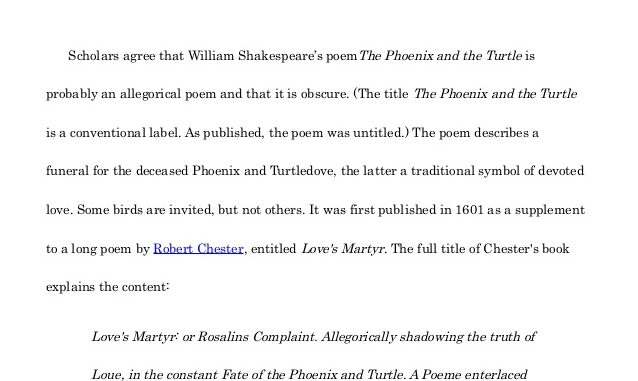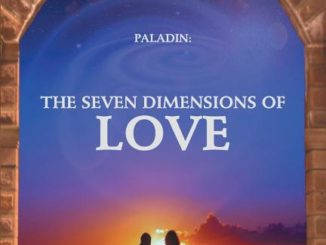
The Phoenix and the Turtle is the most ambiguous of the Shakespeare love poems. It was published in 1601 by Robert Chester as part of a collection called “Loves Martyr”.
The format of the poem is as follows. It is split into two sections, the first section mourns the death of the two lovers, the Phoenix and the Turtle. This section has thirteen stanzas which are each four lines long. They have a rhyme scheme of (a-bb-a). The second section is called the Threnos and has five stanzas which are only three lines long. In this section the voice of reason also laments the death of the two lovers.
Little is known about this Shakespeare love poem. It is not very long but is very vague in its description, making it difficult to interpret. Many scholars argue over what the poem means and its purpose. In fact, scholars once debated whether Shakespeare actually wrote the poem! Thankfully however, most people have now agreed that Shakespeare himself wrote this poem.
But despite its murky history and enigmatic nature, I will try and give my summary of this poem.
The main characters are the Phoenix (the female bird), the Turtle-Dove (her husband), and at the end there is the Threnos, who represents the voice of reason. The Phoenix and the Turtle-Dove love each other completely and truly, but times are changing, and their love is the last real true love. When they die, true love dies with them, and the poem symbolises the death of idealised true love in society at the time. Many other birds such as the crow and the eagle are then called to the funeral of the Phoenix and the Turtle, to mourn their deaths. The other birds represent the variety of normal people in society. The crow, for example, represents a common bird or a common person. The eagle may represent the sharp-minded and brave.
The next part describes how love makes two people become the same being. Shakespeare uses the line “Had the essence but in one” – their spirit had become one being. He then uses another metaphor for the power of love “Number there in love had slain” – making clear that love has killed the separateness of their souls.
The poem then describes how the two lovers slowly become more and more like each other until they are practically the same being. Reason is completely baffled by this – because love does not stand to reason.
The Threnos (the voice of reason) then makes its own observation on the phoenix and the turtle. It describes the couple as “Beauty, truth, and rarity. Grace in all simplicity”. The couple die, leaving no children (the line the author uses is “Leaving no posterity”), because the couple were married but chaste. The Threnos has as great deal of repect for the phoenix and the turtle, and says that with their death, truth and beauty are buried with them, and ends the poem, with a plea to those who are true and fair, to pray for the couple who symbolise all that is pure in love.
There are many theories on what this Shakespeare love poem as a whole symbolises. One theory is that the characters in the poem each represent some of the Catholic friends that Shakespeare had at the time, and the poem is a message in support of Catholicism. Another theory is that the poem actually represents the relationship between Queen Elizabeth I and Robert Devereux, Earl of Essex. Many scholars argue over the various aspects of this poem to this day
Nevertheless, It remains one of Shakespeare’s most mysterious poems. For example, the line, “Property was thus appall’d, That the self was not the same” I think shows how vague and mysterious the poem is. I think Shakespeare himself probably meant it to be vague because the truth and beauty of the love he is trying to describe is quite intangible.
If you are looking for a more complex and interesting Shakespeare love poem to read and enjoy, the Phoenix and the Turtle is a great one to look at. Although there may not be many romantic description or ideas in it, it is always nice to study the methods of the great romantic writers.
Proudly WWW.PONIREVO.COM
Source by Cluivee Lee



